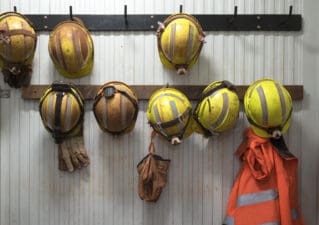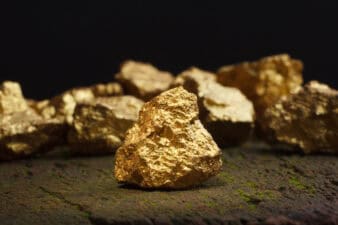It’s been a bumpy ride for Kinross Gold Corporation (TSX:K)(NYSE:KGC) shareholders. From September to October, the stock rocketed from a low of $1.46 to $2.33. Since late October, however, shares have quickly retreated back to under $2.00. There are multiple factors influencing the share price, but one driver reigns supreme.
Gold prices will always matter the most
The massive fluctuations of late, and for most of the company’s history, largely stem from shifts in the price of gold. For example, last month’s 50% rise in shares coincided with a near 10% rise in gold.
While those swings seem to be different in magnitude, consider its effect on profitability. If a company produces gold at a cost of $1,000 an ounce, and gold rises from $1,100 to $1,200, net income would effectively double. That’s why small increases in the price of commodities can have big impacts on the shares of producers.
Unfortunately for Kinross, the bounce in gold prices proved to be temporary. In late October, prices collapsed from $1,180 an ounce back to $1,100, close to where the rally began in September. Interestingly, Kinross shares are still about 15% higher despite gold retreating back to its previous levels. Clearly, there are still some other factors at play.
Costs are falling
Besides higher selling prices, another way to improve profits is by reducing costs. Audacious cost-cutting initiatives have allowed all three of Kinross’s operating regions to meet the company’s original cost guidance levels for 2015.
Kinross’s production costs during the first half of 2015 were $717 per ounce. Costs in the first half of 2014 were $735 per ounce. Kinross now expects costs to fall to $690-730 per ounce, significantly lower than its originally stated guidance of $720-780 per ounce.
Financials are strong
A familiar story among gold miners is crushing levels of debt. As a capital-intensive business, gold miners are required to pour tremendous amounts of money into production throughout the cycle, in good times and bad.
While there are some options to cut capital expenditures, most costs are fixed as long as a mine remains in production. When prices collapse, many miners have difficulty financing costly operations and servicing their debt. Kinross is not one of those companies.
Kinross currently has about $2 billion in debt. This is quite manageable given the firm’s cash levels of $1.1 billion. Additionally, in the past 12 months Kinross generated almost $900 million in operating cash flow. Further cost controls will only help improve cash flow.
Because the company is financially strong, Kinross has found itself in an advantageous position; it has been buying up troubled competitors projects.
In August Barrick Gold Corp. said it would start the process of selling six of its U.S. gold projects in an effort to reduce debt by $3 billion by the end of this year. There are only two rumoured bidders, Kinross and Newmont Mining Corp. Kinross might be able to get away with purchasing some prized assets from a struggling peer in the midst of a bear market.
Shares look attractive
With falling costs, reliable financials, and the ability to take advantage of the current down cycle, Kinross shares look interesting. However, you must believe in higher gold prices to justify a position. That factor, above all, drives the share price.






